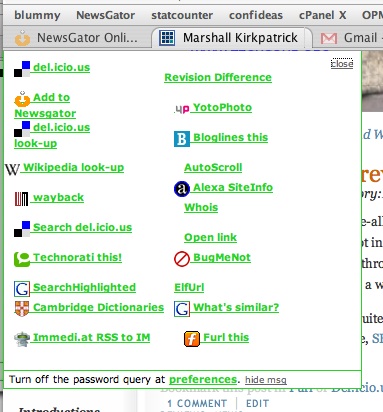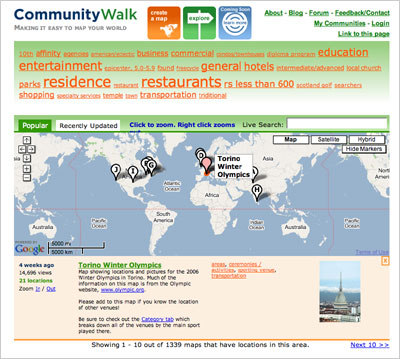It’s been six months since I wrote about the fantastic meta-bookmarklet blummy.com, but I use it every day. It’s a system that allows you to drag and drop bookmarklets (like “save to del.icio.us”) into a box that then drops down from your browser every time you hit the blummy button.
I was just turning a client on to it and noticed that all kinds of new functions have been added. It’s not hard to add functions, I’ve added a number of tools to the system myself using drag and drop javascript or their very simple wizard. Here’s a glimpse at my blummy box – some of these things I didn’t even know were possible until I grabbed them and started using them. Fantastic! I can’t recommend this one highly enough.

Find blog posts, photos, events and more off-site about:
bookmarklets, blummy
